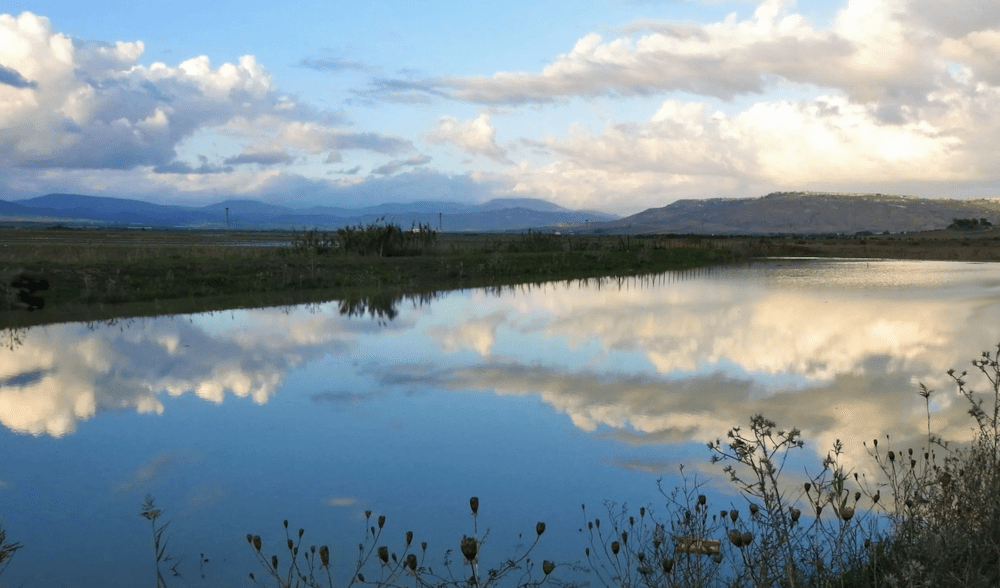IN EASTERN SICILY, GELOI WETLAND, A PRIVATE PROTECTED NATURAL AREA, IN THE MUNICIPALITY OF GELA, IN THE PROVINCE OF CALTANISSETTA, CONFIRMS ONE OF THE MOST PRECIOUS ECOSYSTEMS FOR MEDITERRANEAN BIODIVERSITY. A RECENT SCIENTIFIC DISCOVERY HAS HIGHLIGHTED THE IMPORTANCE OF THIS WETLAND, BRINGING TO LIGHT THE PRESENCE OF A RARE FRESHWATER ALGAE, TOLYPELLA GLOMERATA
The discovery
A team of researchers fromUniversity of Cataniacomposed of Ilaria Pagana, Alessandra Virzì, Manuel Zafarana and Giuseppina Alongi, published a study entitled “New Characeae (Charophyceae, Charales) report in eastern Sicily, Italy”which documents for the first time the presence of “Tolypella glomerata” In the Geloi Wetland. This freshwater algae, an indicator of high-quality aquatic environments, represents an important discovery for the study of Mediterranean ecosystems and for the conservation of Sicilian biodiversity.

The importance of Tolypella glomerata: a hidden treasure
The “Tolypella glomerata”belonging to the family of Characeaeis known for its filamentous structure and for its key role in aquatic ecosystems. It helps improve water quality, acting as a refuge and source of nutrition for various aquatic species. Its presence in the Geloi Wetland increases the scientific value of the site, underlining the urgency of preserving wetlands, crucial for maintaining ecological balances and regulating the water cycle.

How to recognize it
Monoecious aquatic plant, small or medium sized (5-40 cm), green in color and very branched, often encrusted. It has whorls with 6-8 dimorphic rays: the lower ones are sterile, long (1-5 cm) and sparse; the upper ones fertile, short (0.2-1 cm), dense and branched. Internodes long and flexible, without cortex, spines or stipuloids. Male and female gametangia are found at the first node of the rays; each ray hosts 1-2 globules (0.2-0.4 mm) and 2-6 nucule (0.33-0.6 mm). The oospore is 0.2-0.4 mm long, with 7-9 spiral ribs, yellowish brownish in color when wet and pearly when dry.
The birth of Geloi Wetland
In 2017, a group of young people from Niscemi, with the support of the Pro Biodiversity Foundation and the local association ODV Environmental Education Centerstarted a conservation project to save the last wetlands of the Gela Plain, then devastated by poaching, illegal landfillsoverpasture and drainage channels. Despite the degradation, migratory birds continued to frequent the area, showing surprising resilience.
After years of monitoring and planning, Geloi Wetland was born, a naturalistic and agro-ecological oasis. Hectares of wetlands fed by rainwater and brackish groundwater have been restored and the Mediterranean scrub has been reborn on the surrounding hills, thanks to sustainable permaculture practices. The name of the oasis is inspired by the “Campi Geloi” mentioned by Virgil in the Aeneid, with the use of English for an international touch.
An ecosystem to be preserved and safeguarded
Geloi Wetland is already recognized as a habitat of extraordinary ecological importance thanks to its variety of animal and plant species. However, the discovery of Tolypella glomerata further highlights the need for targeted conservation measures. Threats such as human activities and climate change put these environments at risk, making a concrete commitment to their protection essential.
How to protect Geloi Wetland
The protection of wetlands such as Geloi Wetland is essential to preserve unique ecosystems and precious biodiversity. To ensure the protection of these areas, a series of strategies must be adopted:
- Public awareness: There is a need to educate the community about the ecological importance of these areas and the rare species that live there.
- Local interventions: regulate human activities, such as agriculture and industry, to minimize the impact on ecosystems.
- Research support: encourage and encourage the continuous study of the biodiversity of the Geloi Wetland and promote interdisciplinary scientific initiatives.
The discovery of Tolypella glomerata is a reminder of the inestimable value of wetlands and the need to protect them, so that they remain a natural heritage for future generations.

